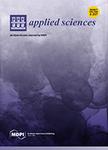版权所有:内蒙古大学图书馆 技术提供:维普资讯• 智图
内蒙古自治区呼和浩特市赛罕区大学西街235号 邮编: 010021

作者机构:Xinjiang Univ Sch Mech Engn Urumqi 830039 Peoples R China
出 版 物:《APPLIED SCIENCES-BASEL》 (Appl. Sci.)
年 卷 期:2025年第15卷第1期
核心收录:
基 金:Xinjiang Uygur Autonomous Region Central Government's Guidance Fund for Local Science and Technology Development Project ZYYD2025QY17
主 题:A* algorithm DWA algorithm multi-robot path planning
摘 要:With the escalating demand for automation in chemical laboratories, multi-robot systems are assuming an increasingly prominent role in chemical laboratories, particularly in the task of transporting reagents and experimental materials. In this paper, we propose a multi-robot path planning approach based on the combination of the A* algorithm and the dynamic window algorithm (DWA) for optimizing the efficiency of reagent transportation in chemical laboratories. In environments like chemical laboratories, dynamic obstacles (such as people and equipment) and transportation tasks that demand precise control render traditional path planning algorithms challenging. To address these issues, in this paper, we incorporate the cost information from the current point to the goal point into the evaluation function of the traditional A* algorithm to enhance the search efficiency and add the safety distance to extract the critical points of the paths, which are utilized as the temporary goal points of the DWA algorithm. In the DWA algorithm, a stop-and-wait mechanism and a replanning strategy are added, and a direction factor is included in the evaluation function to guarantee that the robots can adjust their paths promptly in the presence of dynamic obstacles or interference from other robots to evade potential conflicts or traps, thereby reaching the goal point smoothly. Additionally, regarding the multi-robot path conflict problem, this paper adopts a dynamic prioritization method, which dynamically adjusts the motion priority among robots in accordance with real-time environmental changes, reducing the occurrence of path conflicts. The experimental results highlight that this approach effectively tackles the path planning challenge in multi-robot collaborative transportation tasks within chemical laboratories, significantly enhancing transportation efficiency and ensuring the safe operation of the robots.